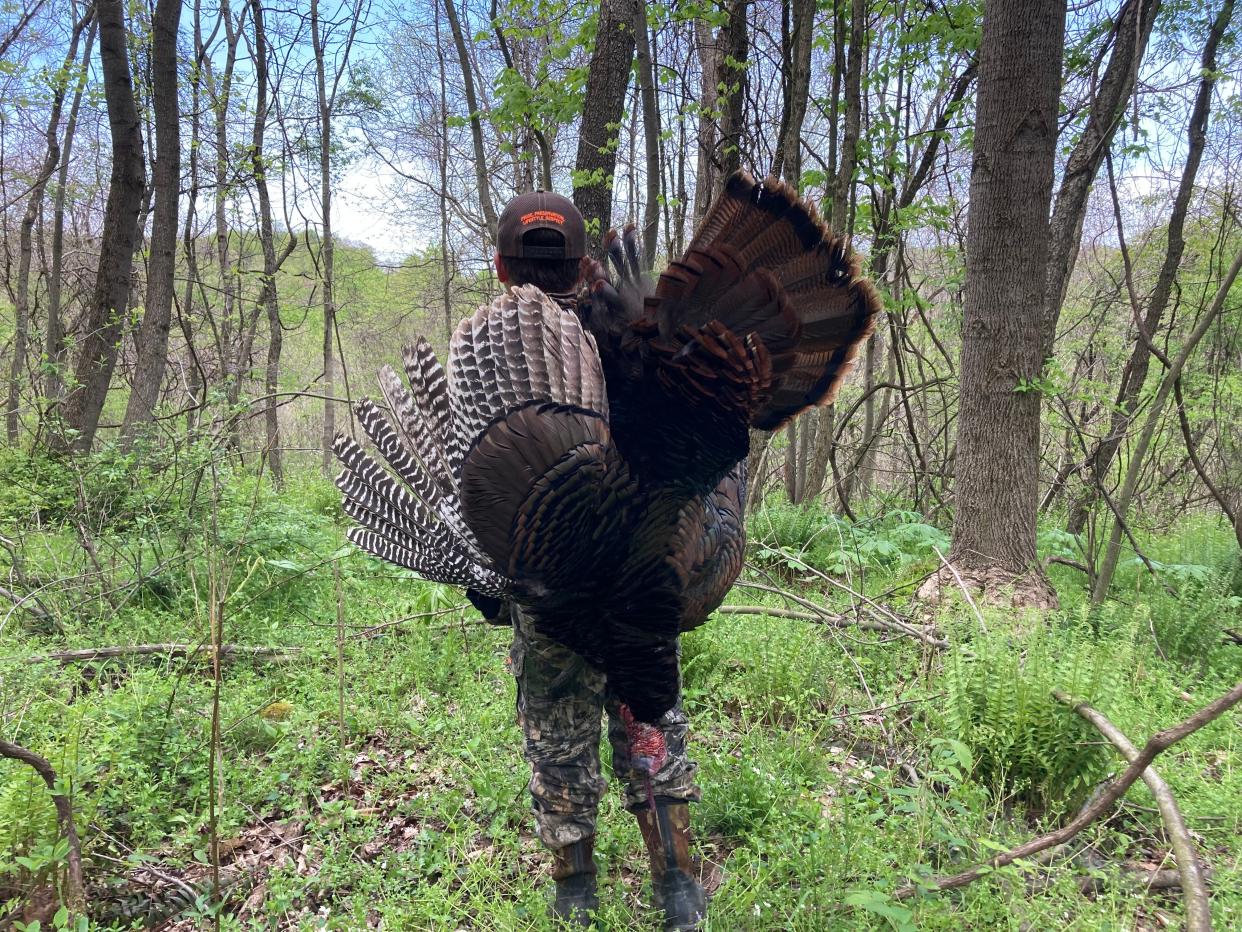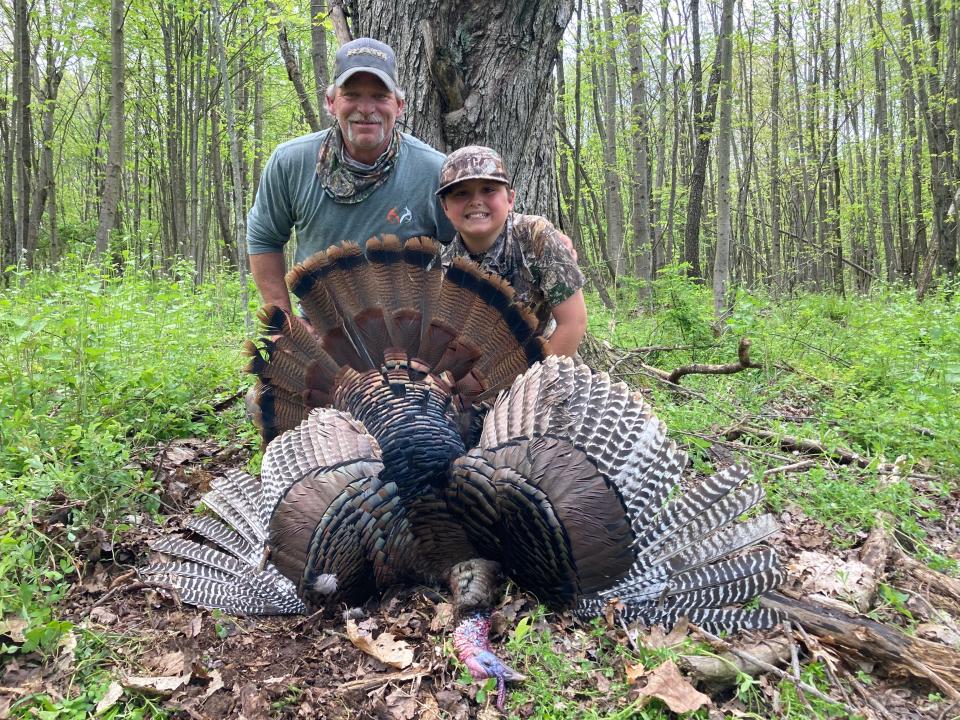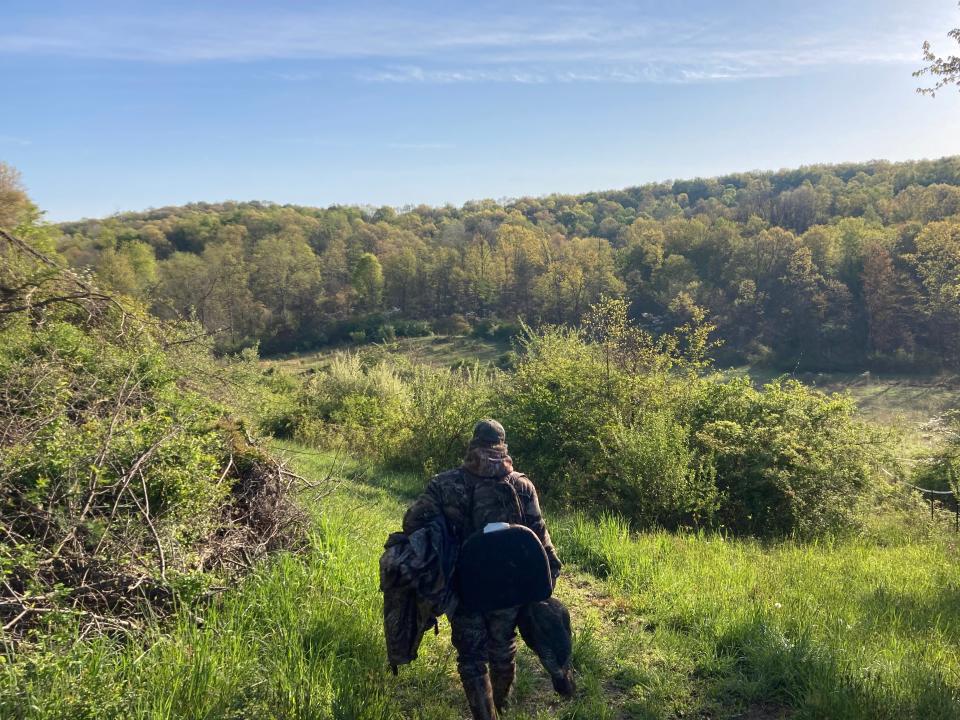Of all the places turkeys call home, Ohio shouldn't be overlooked | Ian Nance

Winding a borrowed Dodge Ram down the gravel roads of Licking County, Harrison and I kicked stones over the challenging beginning to our Ohio turkey hunt.
Half-lost and desperate for lunch, we stumbled upon the Wooden Nickel Tavern in Frazeysburg, which proved the ideal oasis in which to pound a fried bluegill basket and forget our mission for a moment.
Our early-May misfortune began the first morning with a pre-set ground blind having vanished without immediate explanation. Worse, the gobblers had also disappeared without obvious cause. So, we drove 40 minutes to a bucolic valley meadow where multiple longbeards were expected to be harbored.
The afternoon wore on as I listened to a fellow mow a lawn the next hill over, joking he’d shock-gobble a bird by striking a rock with the blade before one responded to our calls. The following morning, a troupe of jakes strutted into the decoys, but the gobblers pitched across a creek onto other property.

While Ohio is well-known to trophy whitetail hunters, its gobbler scene remains relatively low-key. According to the Department of Natural Resources, Ohio’s flock was extirpated before reintroduction efforts began in the 1950s. By 1966, a hunting season was established with a resulting harvest of 12 birds. In 2000, turkey hunting was opened in all 88 counties, and the hunting remains strong.
When seeking these opportunities, look east. Most productive lands, including the popular Wayne National Forest, are in eastern Ohio, where agriculture, grasslands and the undulating woodlands contribute to ideal turkey habitat. Numerous outfitters in this area can be researched online, with three-day bookings a bargain compared to turkey hunts in other states.
Hunting: FWC's new 'special' alligator permit adds 8 weeks to hunt, allows hunting in more zones
For our trip, I booked with Brushy Fork Outfitters, with access to prime properties across multiple counties. Our guide, Steve Zinn, as flummoxed by the early obstacles as we were, was professional and relentless in his efforts, which soon paid off.
After lunch and with a food-induced attitude adjustment, we plopped in a creek bottom meandering around two steep hills. An hour passed, and while half-asleep in skunk cabbage at the sound of the gurgling brook and the cool breeze, Steve announced we’d scale the hill toward a blind at the top.

Halfway there, a tom gobbled. With Harrison on the trigger, we slowly ascended, calling until the gobbler strutted and drummed into view. He made a perfect shot, collecting his first “Mountain Gobbler.”
Freshwater fishing: Size might be down a bit, but bass are still smashing lines in Polk
The final day would already be shortened by our departing flight, but a storm was sweeping across the Midwest that gifted us less than two hours to hunt. We sat along a plowed cornfield, the low light of dawn melding into the oncoming gloom, content that Harrison had bagged his bird, but suddenly attentive as a gobble broke close to our left. My shot rang mere moments before the rain chased us to the trucks.

No matter where you travel, circumstances change fast in the turkey game. But among all of the places turkeys call home, Ohio is certainly worth a closer look.
This article originally appeared on The Ledger: Of all the places turkeys call home, don't overlook Ohio | Hunting

